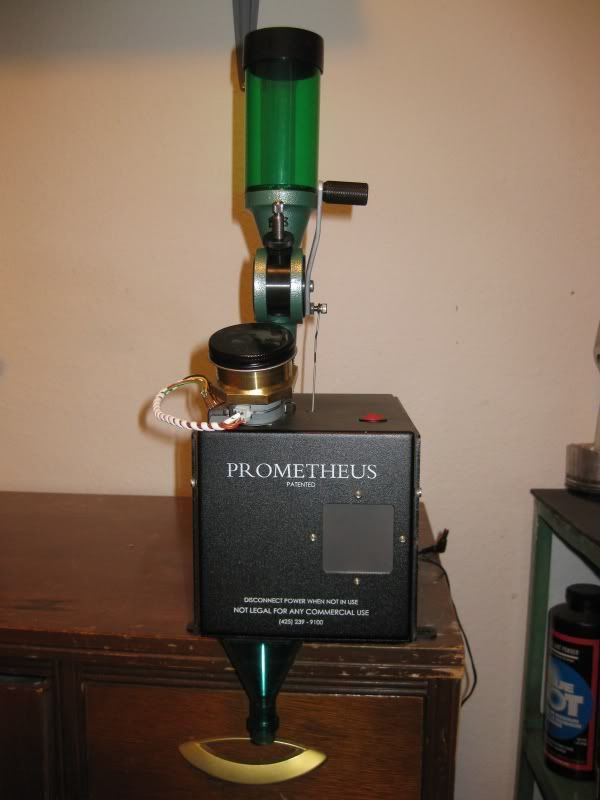You know how much an increment of a tenth of a grain is in grams?? Well, depending on the round-off error to a quantity of .001 grams, it's only .005 or .006 grams!! Yeah, it's THAT small!! First thing to realize if you have a scale that's good to .01 grams and you actually use it in grams to avoid the very large round-off error to grains that these scales have in converting grams to grains is that you're screwed right out of the gate!! Can't even begin to pick up .005 gram on a .01 gram accuracy scale. No chance in hell! No point buying it, or even taking it out of the box.
As far as my Redding scale, it turns out that a tenth of a grain is about 1/2 a mark high or low off the center point, and for a full mark high or low is at least .2 grains high or low. To get the actual weight you want to within +/- .001 grams, the beam needs to be DEAD EVEN with the center mark. If it's off at all you're not accurately weighing to .1 grain. So I went through the exercise of loading 40 rounds of 9x25 on my Mettler balance, and was reduced to the tactic that I normally save for my 338 RUM of adding or taking away individual particles of powder from the pan. Blue Dot particles less that 1/10th as heavy as Retumbo particles, so I was adding about 4 or 5 flakes of Blue Dot at a time to make the weight I wanted.
Granted, the 9x25 at the top end is touchy as hell, so minor variances in powder can produce big changes in velocity, and this round is NOTHING like my 9x23mm where I merrily load up 50 rounds and get SD's of 6 FPS, which is about as low as you can get. In other words, the 9x23 with VV3N37 powder is very stable at the top end, and relatively forgiving of minor variations in charge weight.
I had never calculated the gram weight of .1 grain of powder, and it was a surprise to me that it was as small as it is. So even after 41 years of handloading you can learn something, and I'm posting this to make other people aware of how small a 1/10th grain increment really is, and how OCD you have to be with a beam scale to actually measure out loads that are ACCURATELY 1/10th grain apart.
EDIT: Well, the data is in, and I'm starting to envy Erud's powder measure more and more. While I don't like this result, because it means I'll be fiddling with my Mettler to get my powder charges right and spending a LOT more time doing it, the data is pretty clear. If you weigh your powder charges to .001 gram (.015 grain) rather than with a balance beam scale that reads in .1 grain increments, the Standard Deviation of your velocity goes down, at least in this case. As I said before, I can get SD's of 6 with a 9x23 Winchester load with measure thrown charges, but obviously this is a very stable cartridge and powder configuration. The 9x25 is twitchy to say the least, and seeing as there are no set chamber dimensions, you are stepping clear off the reservation if you try and handload for this cartridge. Whatever you do that works or doesn't work is for your gun ONLY, and don't even begin to think that this data or any other data you have applies to your barrel.
So here's the data, and the overall trend is pretty clear: Counting out powder grains helps if you have the scale and the patience to do it.




